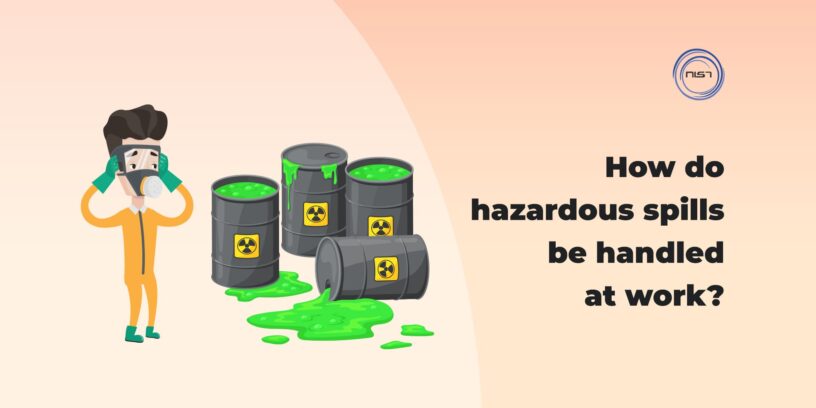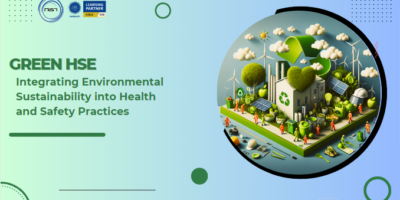Hazardous spills and releases are a major concern for industries of all sizes. A hazardous spill can occur in any workplace, whether it is industrial, transportation, food processing, or any other type of workplace.
A hazardous spill is any release of substances that could cause harm to people or the environment. When a hazardous spill occurs, it is important to take prompt action to prevent any potential injuries and environmental damage.
To control a hazardous spill, it is important to have a plan and follow it. The plan should include provisions for cleaning up the spill, containment and cleanup, response, and investigation. The strategy should be tailored to the particular workplace and the kinds of hazardous fluids present.
Case 1 – One such instance is the Deepwater Horizon oil spill, also known as the Gulf of Mexico oil spill, which is regarded as the worst environmental catastrophe in history and occurred on April 20, 2010. This terrible spill had an effect on a number of the industries that the residents relied on.
Case 2: On June 3, 2020, a chemical factory in Dahej, Gujarat, India, experienced an explosion that resulted from the mixing of two incompatible chemicals, such as dimethyl sulphate and nitric acid. Five persons were killed and 57 others were injured in this explosion.
Case 3 – On June 26, 2021, a chemical spill at the public pool in Boise, USA, sickened 28 individuals and necessitated the hospitalisation of roughly 14 people.
Reasons for spilling:
These hazardous spills are not only harmful but potentially deadly to the environment and the human when workplace hazardous spills occur. Workplace hazardous spills can be caused by a variety of factors, such as improper storage, mishandling, and accidental spills.
What causes a hazardous spill to happen and what are its impacts:
The environment in which employees work is becoming increasingly hazardous with the increase of chemicals, heavy metals, and other pollutants. A workplace hazard can mean a lot to an employee’s health if not dealt with in an effective manner. Workplaces need to be aware of potential dangers so that they can take the necessary precautions to protect their employees from harm.
Hazardous spills occur when chemicals, oil, radiation, or other dangerous substances escape from a workplace or storage area and end up in the environment. They can contaminate soil, water, and air, posing serious health and environmental risks to individuals and ecosystems.
The occurrence of a hazardous spill often depends on the condition of the workplace, the type of chemical involved, and the weather conditions as well. And spills that result from flooding are particularly dangerous because they contaminate water supplies with heavy metals, bacteria, and other pollutants.
When workplace hazardous spills occur, it is not only harmful but potentially deadly to the environment and humans. Workplace hazardous spills can be caused by a variety of factors, such as improper storage, mishandling, and accidental spills.
The immediate effects of a hazardous spill can be devastating. For instance, a spill of ethylene glycol, a compound used in many types of liquids, can cause dangerous exposure to nerve and respiratory agents. Other common effects of a hazardous spill include skin exposure to hazardous materials, fear and anxiety in people who are near the spill, and health problems for people who consume water or food that has been contaminated by the spill.
Steps to prevent workplace hazards:
There is no one-size-fits-all approach to dealing with hazardous spills, as the nature and severity of the spill will vary depending on the particular situation. But there are several precautions that every workplace can take to reduce the potential harm from a hazardous spill:
- Stop production immediately if possible. This is probably the most important step, as it allows time to clean up any spilled material and ensure that employees remain safe. If production cannot be stopped immediately, try to limit workplace access as much as possible so that debris does not accumulate.
- Though there are a number of ways to prevent and control workplace hazardous spills, the most important thing is to have an effective spill prevention plan in place. This will involve training employees on how to handle and respond to potential spills, as well as setting up systems that will alert workers when there is a possible spill occurrence.
- It is also important to regularly inspect the work area for signs of leaks or other accidents, and take appropriate measures if necessary.
- In addition, employers should have ongoing training on hazardous spills to keep employees up-to-date on the latest methods and technologies for controlling spills.
In short, having a written hazardous spill response plan and training is the best way to ensure that a hazardous spill does not occur and that potential injuries and environmental damage are prevented.
Benefits of Hazardous Spill Training:
Hazardous spills are a reality in our everyday lives. Hazardous spills can occur at any time and place, from manufacturing processes to accidents in the workplace. The decision to respond to a hazardous spill quickly and safely defines the outcome of the event. Hazardous spill response training provides individuals with the knowledge and skills they need to respond to a hazardous spill in a safe and effective way.
- Responders are trained on how to manage hazardous material spills and incidents through Hazardous Spill Response (HSR) training.
- HSR programs help emergency personnel respond safely and effectively.
- A successful HSR program helps ensure the safety of people exposed to emergencies, by providing the required knowledge about spill cleanup procedures and personal protective equipment (PPE).
- Emergency personnel who have received hazard response training have a higher chance of recovering spilled material and diminishing the spill’s effects.
- Other benefits of HSR training include the ability to protect people, the environment, and property. In the event of a hazardous spill, trained responders can respond quickly and safely. This ensures that both people and the environment are protected from potential harm.
Why NIST?
Workplaces must take precautions to prevent hazardous spills from happening. These precautions include installing spill response equipment, training employees, and monitoring the condition of the workplace. If a hazardous spill does occur, the workers involved must be prepared to respond quickly and safely. You can ensure a serene environment and a productive outcome by making sure the workplace you are working in is prepared to handle hazardous spills now. Recently, NIST trained more than 70 delegates from a renowned multinational steel and cement manufacturing company on chemical spills.
We at NIST have a range of resources that you can refer to for your specific needs: Our training courses have been designed to assist you with how to manage hazards in your workplace, including how to handle dangerous goods; safety policies and procedures; managing incidents and emergencies; and general health and safety issues in your workplace or facility to prevent injuries, illnesses, and deaths among workers and visitors to your facility or premises, or where you conduct business activities. Happy Learning!














Leave a Reply